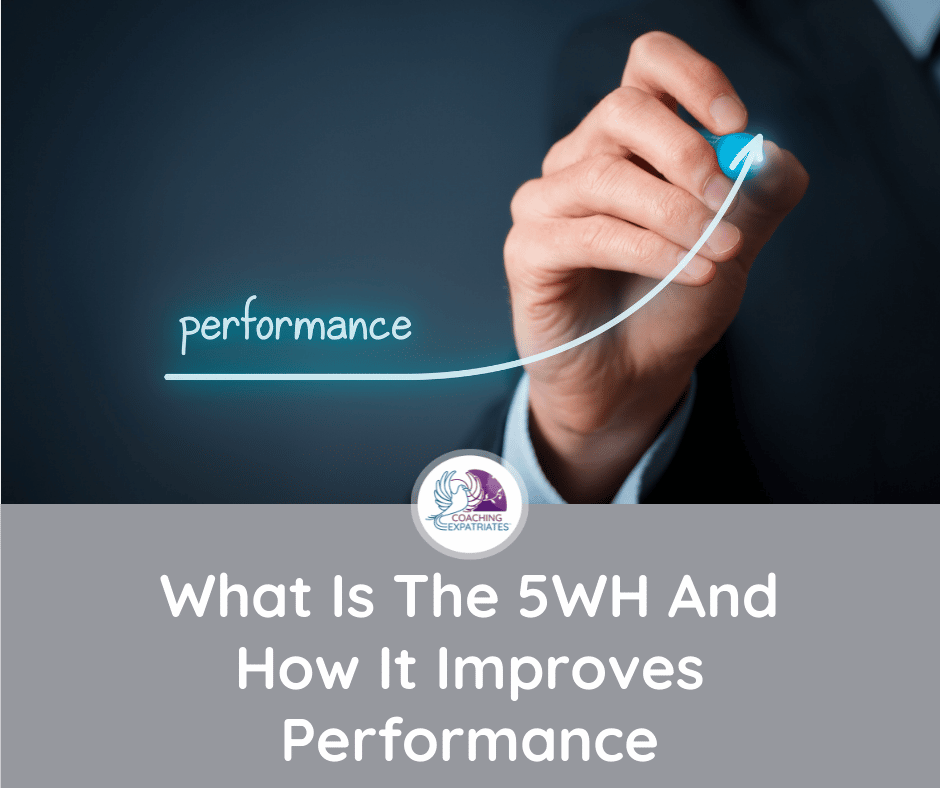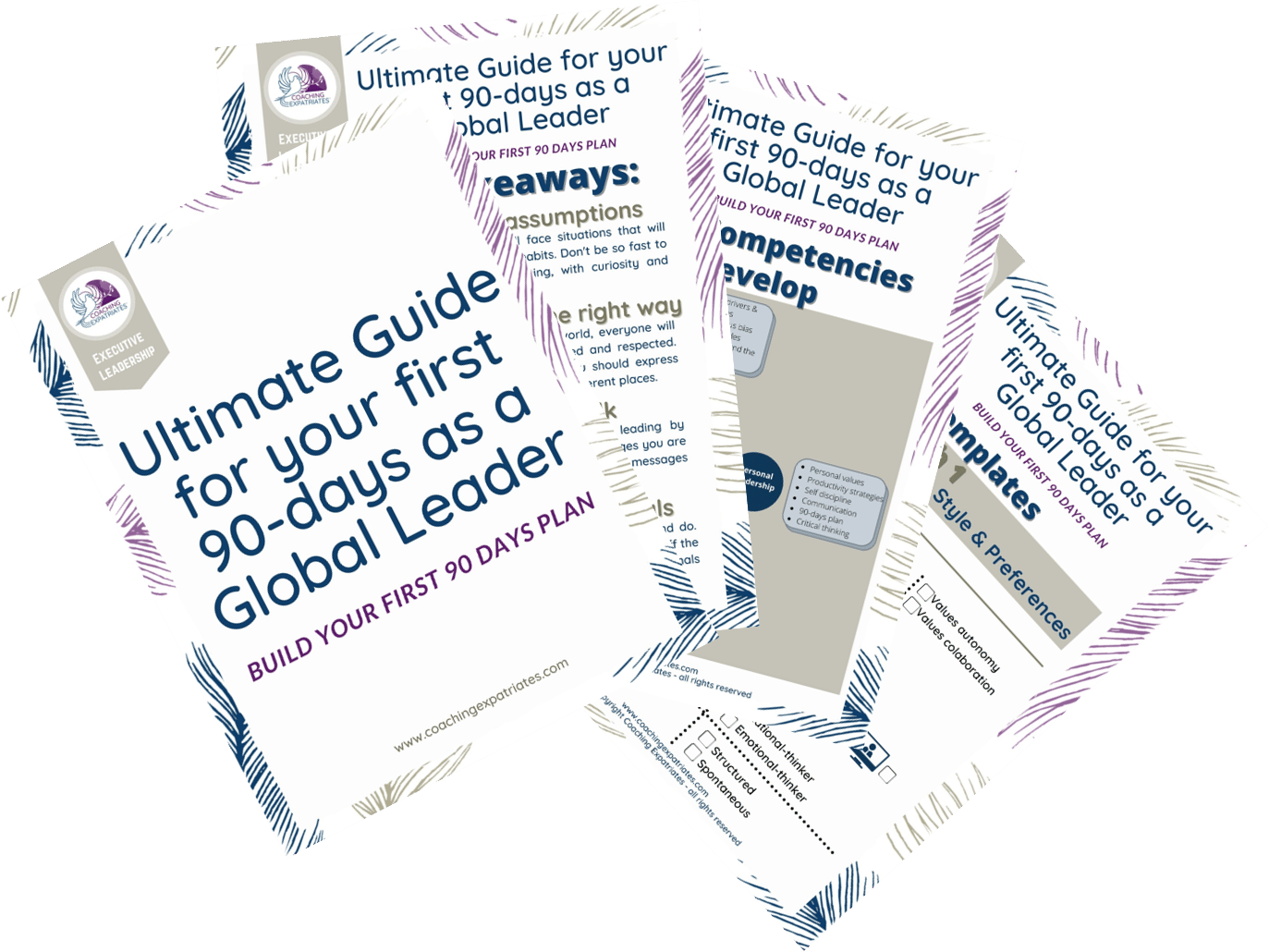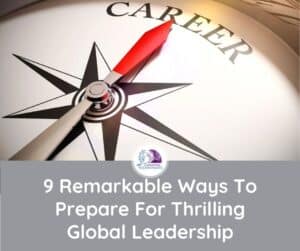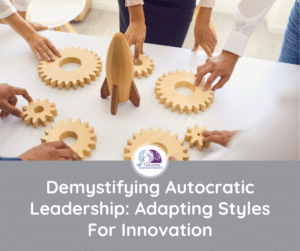If you have basic project management skills or are certified in Six Sigma, you probably have already heard of the 5WH or 5W1H. If not, you are in luck! You are about to learn all about it!
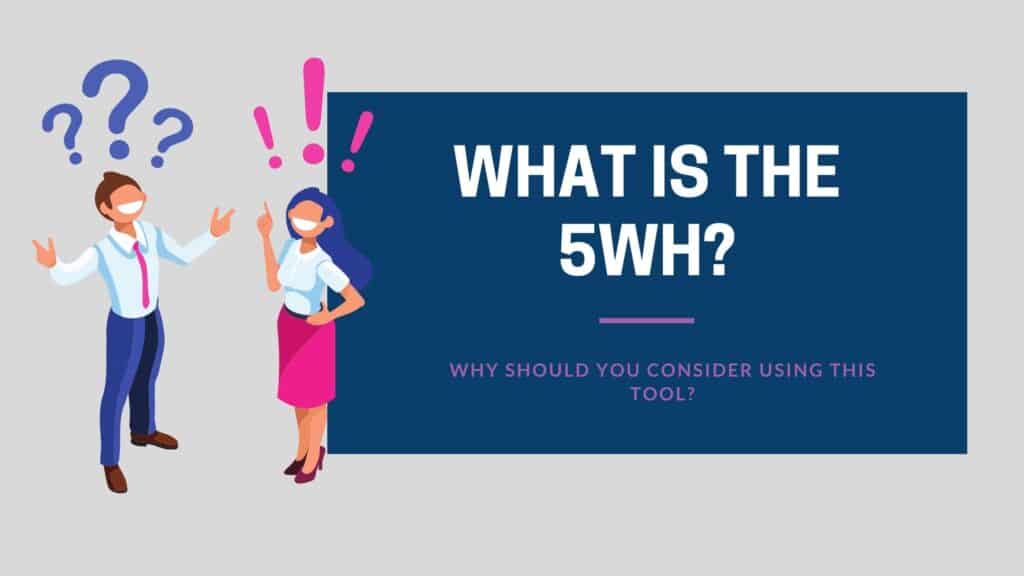
What Is The 5WH?
The 5WH, also known as 5W 1H, is a framework to help individuals in data-gathering and problem-solving.
Imagine if there were a set of things you could think about in every situation to help you structure your data-digging and get more out of the information in this process? Neat, right? Luckily for us, this “thing” exists!
It is used by journalists, project managers, quality improvers, financial planners, police officers, investigators, and many others.
5WH is a set of questions you always make while gathering data and solving problems. They stand for:
- Who?
- What?
- When?
- Why?
- Where?
- How?
I first got in contact with this framework when I was getting certified for my Six Sigma Green Belt in 2001. At the time, it was mandatory for all General Electric employees, regardless of their business unit or department.
Quite frankly, I did not understand at first why it was such a breakthrough in the eyes of the trainers. How exactly could these simple questions be so helpful?
Until they showed us how many of our business cases, discussions, and projects usually contained answers to only 1 or 2 of these questions. They took real examples from our business and dissected them. The best ones answered ‘What the problem was” and “how to solve it.”
Then they took those same examples and put together a business case using the 5WH, right in front of us, by answering all the questions. Wow. What a difference. And you will learn in this post – step-by-step – how to do the same.
There is nothing like showing people the real gap so that they can see the real value of a tool.
With time and experience, I actually started to appreciate the 5WH framework more and more. And I could quickly tell the difference between bad and good business cases based on how many of these questions they covered.

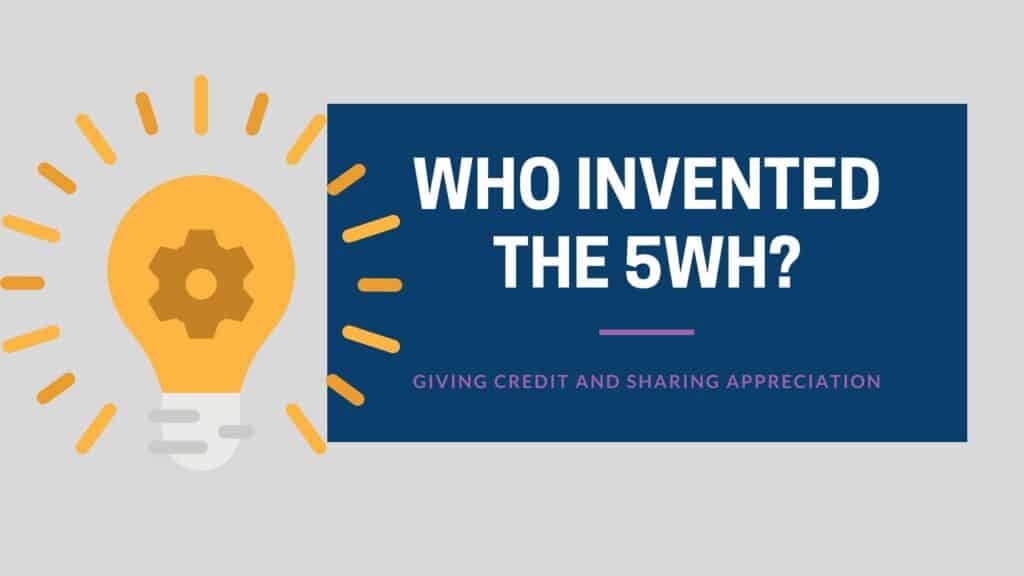
Who Invented The 5WH?
There is a long philosophical debate about this, but, apparently, it is currently attributed to Aristotle, in his best-known work on Ethics: Nicomachean Ethics.
Although his objective was more to discuss elements of circumstance and not exactly problem-solving, his ideas were then leveraged for data-gathering purposes and then given the acronym 5WH or 5W1H.
In reality, this framework was even coined as “The Reporter’s Questions,” as in journalism, reporters are expected to ask all these 6 questions to ensure good reporting.
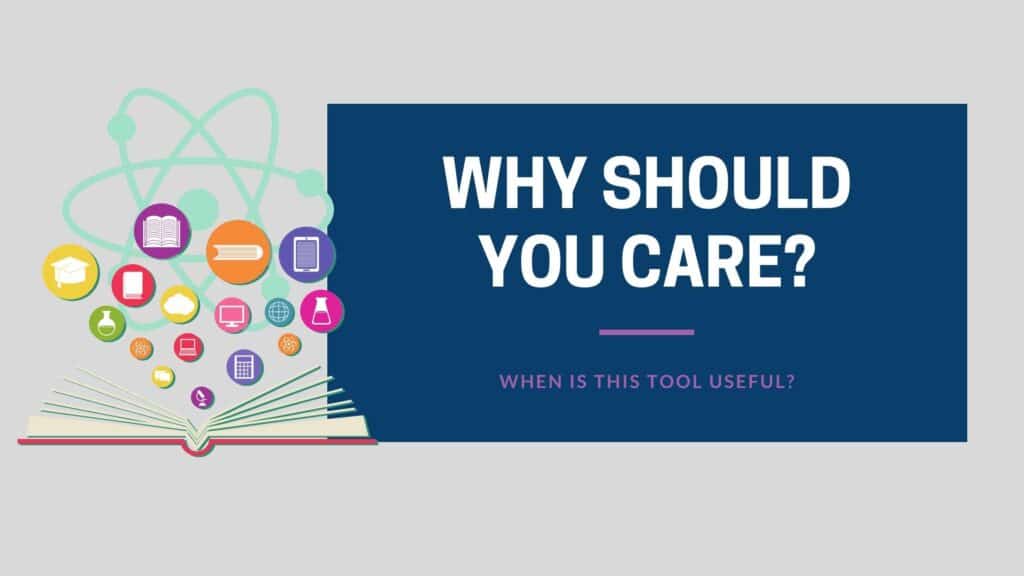
Why Should You Care About The 5WH?
Creating business cases with action plans is a necessity in life, not just for business. When was the last time you had to convince your husband or wife about something? Your kids? Your parents?
The framework helps you put perspective onto things and think about many factors in a well-rounded manner. Even if you don’t share all the answers with those you are trying to convince about something, it helps you get prepared. If they do ask something, you already have the answer. And you can lead the narrative because you already researched about it. It’s brilliant.
Many business problem-solving folks went a step further and included a second ‘H’ in the framework – an H for the “How Much?” Since cost and expenses are important in today’s context, I adopted the second H myself when using the 5WH.
As a “recovering finance gal,” you know how much I care about always knowing how much an initiative or solution costs, right? So the 5W2H (how this version of this framework was coined) also includes the question “how much” and has become more and more used in executive leadership.
So by simply answering these 7 questions: who, what, when, where, why, how, and how much, you will boost your performance. You will be able to map out the critical elements you need to go after and put them together in the right shape for your audience.
Then, of course, it is a matter of knowing your audience and packaging your narrative according to their values and needs.
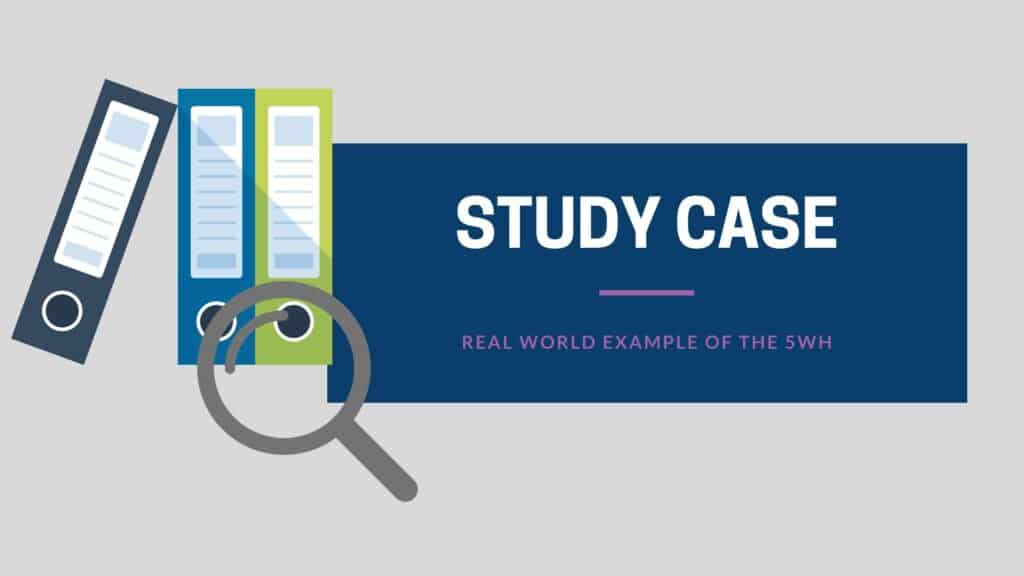
Study Case
I recently talked to a global leader trying to convince a group of executives about the need for a new data mining and analysis system. What they had in place was outdated, difficult to use and user adherence was pretty low. It seemed a no-brainer that a change was needed, but this global leader felt a lot of resistance.
While helping him outline his business case, that we divided into 2 categories. This is what he came up with:
A. Context Understanding: 5WH For Driving The Narrative.
If you read the questions below, you will see that they are guiding a thinking process. This is what’s called “Driving The Narrative.” The purpose is not to manipulate people. Its purpose is to help them understand the context to which a change is necessary.
People who don’t understand a problem’s background end up making decisions in a transactional fashion instead of a transformational fashion. And these decisions tend to be less impactful and positive.
In this study case, I want to share his list of questions under “context understanding” to discuss how he nailed it.
- How does this system currently add value to the company?
- Who are the users of the current system?
- What do they need the system for in the first place?
- When do the users complain about the system?
- What do they complain about?
- What are the main issues the users are facing with the current system
- What is the current system not providing them?
- Who are the main stakeholders of the output of what users work on?
- What do the stakeholders think about the users in terms of performance?
- Why is a new system even needed?
- How would a new system improve performance?
- Where is the new system needed?
B. Business Case: Using the 5WH To Build A Case
- Why should we say yes to a new system?
- What system should we use instead, and what are its benefits over the current one?
- Who Should Implement this system?
- When is the best time for the implementation of a new system?
- Where should we pilot it first?
- How should we go about it, if we decide to implement a new system? (i.e. the plan)
- How much will it cost the company to implement a new system?
- What’s included in the implementation cost?
Do you know how he nailed it? Context understanding can be shared by sharing a story and hooking people’s attention. And that’s what he did. Then he created one presentation page per question in the business case section, using graphs, data, and visuals, according to his audience.
Because he had very different audiences – one with high-level executives, one with data-driven minds, and one with financial decision-makers, we had to create different decks for the different audiences. But all of them were addressing the same questions —just in a different format.
Some leaderships will be more connected with certain parts of the background or context, less with other parts. Some leaders will relate more to some parts of the problem and less with others. His success was because he catered the same information to what his audience really needed and how they needed it.
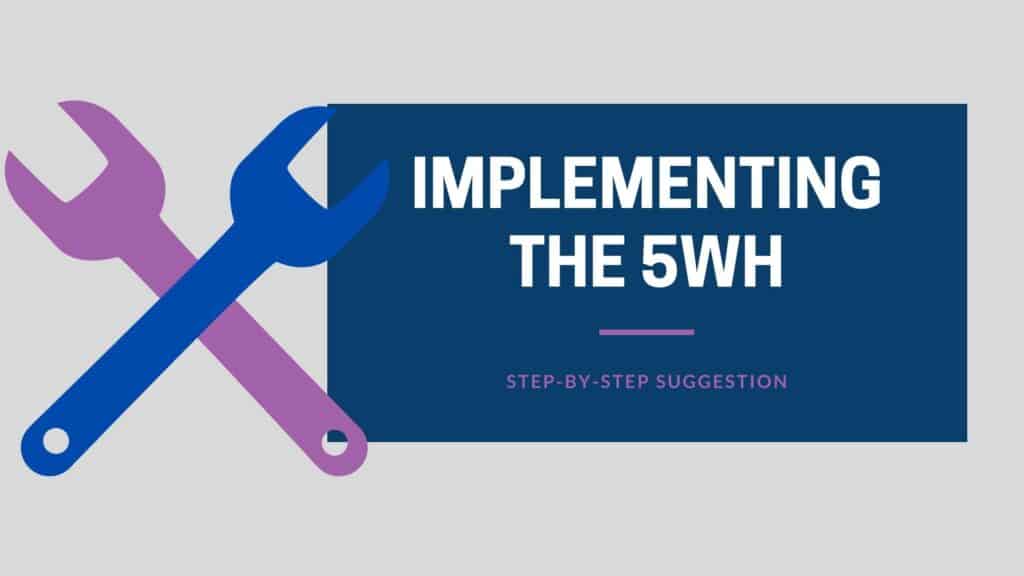
Implementing The 5WH In Your Situation
I know it feels easy to read about it, but when it’s your turn to do it, it may feel pretty awkward. I have a few tips for you to leverage the 5WH concept.
Step 1: Brainstorm with other people.
Gather a few people you trust, and that know the background of your situation well. Brainstorm with them. Make as many questions as you can using the 5WH. Don’t focus on the narrative for now. Focus on generating as many questions as you can. If you see yourself tempted to use other words, not in the 5WH, try to re-formulate them under one of the 5WH questions.
Step 2: Mark each question as “context” or “business case.”
In this step, you simply want to triage the questions based on whether they will help you tell the story or if they will help you make a case. The reason why categorizing is essential is because it gives you further clarity when building your presentation. Providing context to a situation is the same as leveling everyone to one same place. If people don’t feel attached by understanding context, they will never relate to the need for change. Therefore your business case may go down the drains.
Step 3: Select & order of the questions into a narrative
Now it’s a fun part. If you can do it with other people of trust, you’ll see this step going much faster. You will basically start with everything you labeled “context” and order the selected questions (for your narrative) in a way that will tell a story through its answers. A story that people will be able to relate to and understand “the pain.” Next, you will also do the same for the questions labeled “business case.”
A lot of people ask me: how do I know the right order? Well, it depends on the audience. You will have to know what makes your audience tick. Straight-forward individuals are very different from data-driven individuals. You must select and order your questions based on what has more appeal to your audience.
Step 4: Answer The Questions
Now that you have your orders right, it’s time to answer all these questions. During this step, you will see that you might not have all the information to answer the questions. Make a side note about what to research. If you are working with a team, make sure to define well who will tackle each topic and by when you should reconvene with the answers.
Step 5: Build Your presentation
Now that you have the narrative, case, and answers, it’s time to package it in a presentation. Remember. Presentations are not just the act of vomiting information. You have to cater the information to your audience. For this, you’d need to do some extra research and find out how specific people like information presented. Different global leadership styles have different preferences. Find out what they are, and cater to them accordingly.
Step 6: Prepare In Advance
Is there a way to influence people that are respected by your audience? Can they help you or back you? How can you get support from other people, areas, and initiatives? Preparation is not only for the presentation day. It’s for the entire perception’s management initiative.
Step 7: The Big Day(s)
Now it’s time to share with your audience(s) your business case. You’ll need some skills for this under the People Leadership Competence. Up to now, you were using skills in Organizational Leadership competence. So many leaders find it difficult to pivot from one competence to another, but that’s exactly what you are going to do here. Interested in learning more about the 4 different competencies in global leadership? We have a full guide here.
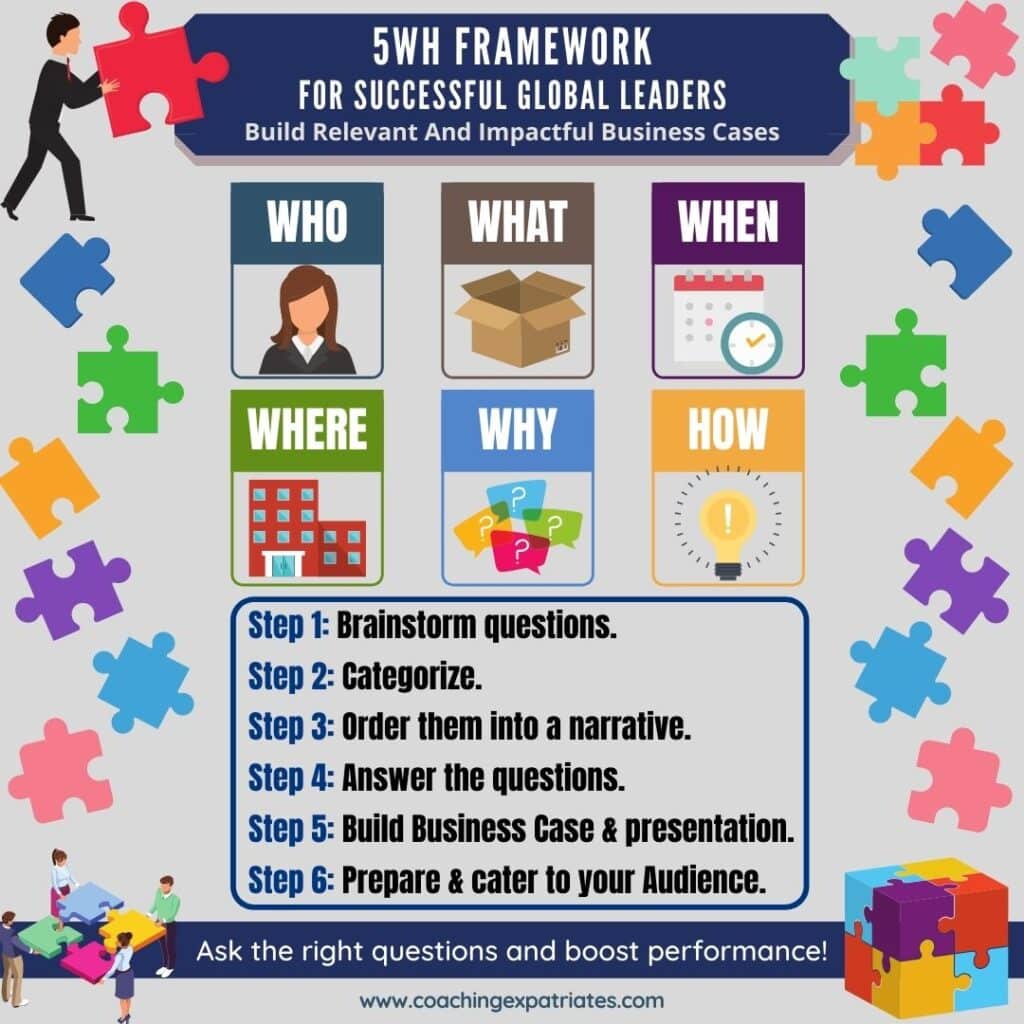
Final Remarks
If you came this far in the reading, you probably could feel how powerful the 5WH framework can be. You can leverage a simple tool to make impactful business decisions. That’s how exceptional global leaders do their act.
If you enjoyed this post, consider subscribing to our newsletter using the form below. We focus on providing good content to global leaders who want to improve their global leadership skills, increase performance, and focus on the right success habits. We know your inbox is sacred, so we email just once per week, and we never sell your information. Trust is the basis of global leadership, and we fully honor it.
Do you also want to boost performance and gain clarity before showing up for big days and meetings? Consider choosing us as your Executive Leadership Coach. Contact us for custom projects!

